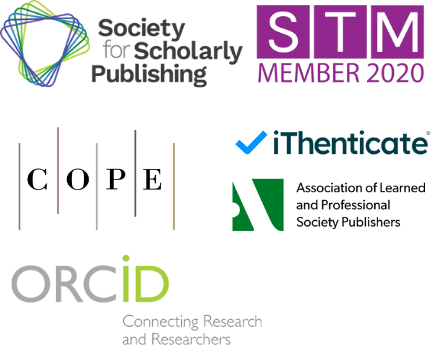Data Analytics Applications in Diverse Professional Domains
DOI:
https://doi.org/10.71222/zzvv4694Keywords:
data analytics, business intelligence, predictive analytics, performance optimization, data-driven decision-making, organizational performanceAbstract
Data analytics has emerged as a transformative force across diverse professional domains, fundamentally altering decision-making processes and operational methodologies. This paper examines the application of analytical frameworks in multiple sectors including business intelligence, manufacturing systems, construction management, and digital platforms. The investigation reveals that analytics-driven approaches enable organizations to extract actionable insights from complex datasets, optimize performance metrics, and enhance strategic planning capabilities. Through systematic analysis of implementation strategies across various professional contexts, this study identifies common challenges including data quality issues, analytical skill gaps, and organizational resistance to data-driven paradigms. The findings demonstrate that successful analytics adoption requires integration of technological infrastructure with human expertise and organizational culture transformation. Comparative analyses of analytics applications in domains such as supply chain optimization, user engagement enhancement, risk assessment, and performance evaluation reveal convergent methodologies that transcend disciplinary boundaries. These insights contribute to understanding how data-driven decision-making frameworks can be adapted and scaled across different professional environments, providing practical guidance for organizations seeking to leverage analytics capabilities for competitive advantage and operational excellence.
References
1. H. Chen, R. H. L. Chiang, and V. C. Storey, “Business intelligence and analytics: From big data to big impact,” MIS Quarterly, vol. 36, no. 4, pp. 1165–1188, 2012, doi: 10.2307/41703503.
2. X. Luo, “Immersive digital modeling and interactive manufacturing systems in the textile industry,” J. Comput. Signal Syst. Res., vol. 2, no. 5, pp. 31–40, 2025, doi: 10.71222/jyctft16.
3. S. Jing, "Practice of digital construction to improve construction project progress management," Academic Journal of Engineering and Technology Science, vol. 8, no. 2, pp. 36–44, 2025, doi: 10.25236/AJETS.2025.080205.
4. Y. Li, X. Zhao, C. Liu, and Z. Zhang, “Applications of Digital Technologies in Promoting Sustainable Construction Practices: A Literature Review,” Sustainability, vol. 17, no. 2, pp. 487–487, 2025, doi: 10.3390/su17020487.
5. F. Provost and T. Fawcett, “Data Science and its Relationship to Big Data and Data-Driven Decision Making,” Big Data, vol. 1, no. 1, pp. 51–59, 2013, doi: 10.1089/big.2013.1508.
6. F. Gao, "The Role of Data Analytics in Enhancing Digital Platform User Engagement and Retention", J. Media Journal. Commun. Stud., vol. 1, no. 1, pp. 10–17, Apr. 2025, doi: 10.71222/z27xzp64.
7. S. F. Wamba, A. Gunasekaran, S. Akter, S. J. Ren, R. Dubey, and S. J. Childe, “Big Data Analytics and Firm Performance: Effects of Dynamic Capabilities,” Journal of Business Research, vol. 70, no. 1, pp. 356–365, 2017, doi: 10.1016/j.jbusres.2016.08.009.
8. L. Yang, “The Evolution of Ballet Pedagogy: A Study of Traditional and Contemporary Approaches,” Journal of Literature and Arts Research, vol. 2, no. 2, pp. 1–10, Apr. 2025, doi: 10.71222/2nw5qw82.
9. U. Sivarajah, M. M. Kamal, Z. Irani, and V. Weerakkody, “Critical analysis of big data challenges and analytical methods,” Journal of Business Research, vol. 70, no. 1, pp. 263–286, 2017, doi: 10.1016/j.jbusres.2016.08.001.
10. B. Wu, "Market research and product planning in e-commerce projects: A systematic analysis of strategies and methods," Acad. J. Bus. Manag., vol. 7, no. 3, pp. 45–53, 2025, doi: 10.25236/AJBM.2025.070307.
11. A. Gunasekaran, T. Papadopoulos, R. Dubey, S. F. Wamba, S. J. Childe, and B. Hazen et al., “Big Data and Predictive Analytics for Supply Chain and Organizational Performance,” Journal of Business Research, vol. 70, no. 1, pp. 308–317, 2017, doi: 10.1016/j.jbusres.2016.08.004.
12. G. Wang, "Performance evaluation and optimization of photovoltaic systems in urban environments," International Journal of New Developments in Engineering and Society, vol. 9, pp. 42–49, 2025, doi: 10.25236/IJNDES.2025.090106.
13. S. Yang, “The Impact of Continuous Integration and Continuous Delivery on Software Development Efficiency,” Journal of Computer, Signal, and System Research, vol. 2, no. 3, pp. 59–68, Apr. 2025, doi: 10.71222/pzvfqm21.
14. L. Yun, "Analyzing Credit Risk Management in the Digital Age: Challenges and Solutions," Econ. Manag. Innov., vol. 2, no. 2, pp. 81–92, Apr. 2025, doi: 10.71222/ps8sw070.
15. Y. Liu, “Post-pandemic Architectural Design: A Review of Global Adaptations in Public Buildings,” International Journal of Engineering Advances, vol. 2, no. 1, pp. 91–100, Apr. 2025, doi: 10.71222/1cj1j328.
Downloads
Published
Issue
Section
License
Copyright (c) 2025 Priya Singh, Daniel Wang, Marie Dubois (Author)

This work is licensed under a Creative Commons Attribution 4.0 International License.


